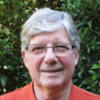In their book My Dad Wished He Had One of Those Richard Porter and Giles Chapman, with tongues firmly in cheeks, write about the Ferrari Daytona GT Supercar, saying:
`. . . it represented the pinnacle of what they knew about shoving a Gods of War V12 under the long, flowing bonnet of a beautiful machine meant for monstering entire continents in an afternoon.'
Australians are about to get the chance to see what the men behind the Top Gear BBC TV program are on about when some of the world's rarest Daytonas celebrate the 40th anniversary of the model at this year's Classic Adelaide in November.
“The Daytona is the epitome of a supercar, with its styling, potent V12 performance and bad boy aura that has made it star on the track, in films and on TV,” said Kevin Wall, general manager of European Automotive Imports, the Australian and New Zealand Ferrari importer who will be welcoming Ferrari Daytona owners to Adelaide.
“Its influences can be seen across the industry and the top Ferrari model today - the Ferrari 599 GTB Fiorano - is, like the Daytona, a classic front engine, rear-wheel drive V12 powered supercar.”
The Ferrari Daytonas attending the Classic Adelaide event will be on display at the Gouger Street party on November 21
before taking part in the event the following two days, enabling the public to hear the magnificent sound of the Daytona's V12
engine at full noise.
The Daytona days in Adelaide are part of a worldwide celebration for the classic Ferrari supercar, which started at this year's Geneva Motor Show when Ferrari launched a special version of the modern Ferrari 612 Scaglietti with a colour and trim combination the same as the original launch Ferrari Daytona.
This was followed in April by the first of a series of Daytona gatherings at the Mugello Historic Festival and a celebration of the Daytona at the Essen Technoclassica in Germany.
Officially named the Ferrari 365 GTB/4, the Ferrari Daytona was launched at the 1968 Paris Motor Show and its design by Leonardo Fioravanti at Pininfarina was a radical change for Ferrari, with its sharp edge lines, flowing shape and blended lights and bumpers placing it at the cutting edge of car design.
Fioravanti was inspired to produce the Daytona after seeing a bare Ferrari 330 GTC chassis.
“It struck me as something unique,” said Fioravanti. “I wanted to follow its dimensions, while playing close attention to aerodynamics. The fundamental objective was to obtain a thin, svelte car; the search was for a sense of lightness, rake and a slender look.
The official name comes from capacity of one cylinder - 365cc - and the `4' represents the four camshafts atop the V12 engine.
The unofficial Daytona name arose from its unofficial designation during its development, to commemorate the triple
success of Ferrari in the 1967 Daytona 24-hour race with the Ferrari 330P4.
The Daytona raced at Daytona with its best result being in a 1973 24-hour race when a car entered by NART finished second overall, driven by Francois Migault and Milt Minter. The same year two Daytonas finished in the top 10 at Le Mans.
With its front mounted 259kW 4390cc V12 engine and relative light weight of just 1200kg, the Ferrari Daytona offered performance, which even today places it in the supercar bracket, and for many years held the title of fastest car tested for many motoring magazines.
The engine, known as the Tipo 251, was a classic 60 degree V12 with double overhead camshafts and featured six Weber twin carburettors and provided the Daytona with a 280km/h top speed. It blasted its way to 100km/h in just 5.4 seconds.
The Daytona was officially the world's fastest road legal car from 1968 to 1970 with an independently tested top speed of 175mph or 281km/h by UK magazine, Autocar, and enough to see off its nearby rival, the Lamborghini Miura.
Of the 1406 Daytonas produced by Ferrari, just 158 were made in right-hand drive, while the rare Spyder, produced by Scaglietti, had a total production run of 122, with just seven in right-hand drive. In addition, some 15 Daytonas were built as racing cars.
The Ferrari Daytona's bad boy image was cemented in 1971 when racing legend Dan Gurney and Car and Driver editor Brock Yates drove a Sunoco Blue Daytona from New York to Los Angeles in the inaugural Cannonball Baker Sea to Shining Sea Memorial Trophy Dash.
The Daytona covered the 4628km in 35 hours 54 minutes at an average speed, including stops, of 129km/h. The drivers claim to have crossed the back roads of Arizona at a steady 290km/h, reporting the Daytona to be rock-steady.
British singer Chris Rea celebrated the Ferrari in his song Daytona with the lines she ain't easy, so you take good care/or she will scream down your lust. The song finishes with Daytona's engine at full power and screaming tyres to match.

















Comments